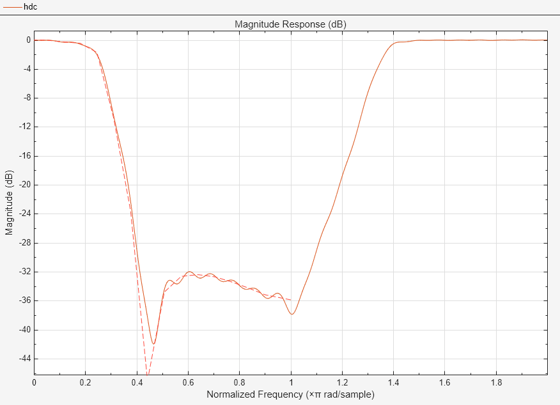freqsamp
Real or complex frequency-sampled FIR filter from specification object
Syntax
hd = design(d,'freqsamp','SystemObject',true)
hd = design(...,'filterstructure',structure,'SystemObject',true)
hd = design(...,'window',window,'SystemObject',true)
Description
hd = design(d,'freqsamp','SystemObject',true) designs
a frequency-sampled filter specified by the filter specifications
object d.
hd = design(...,'filterstructure',structure,'SystemObject',true) returns
a filter with the filter structure you specify by the structure input
argument. structure is dffir by
default and can be any one of the following filter structures.
Structure | Description of Resulting Filter Structure |
|---|---|
| Direct-form FIR filter |
| Transposed direct-form FIR filter |
| Symmetrical direct-form FIR filter |
| Asymmetrical direct-form FIR filter |
hd = design(...,'window',window,'SystemObject',true) designs
filters using the window specified by window. Provide
the input argument window as
A character vector for the window type. For example, use
'bartlett', or'hamming'. Seewindowfor the full list of windows available.A function handle that references the
windowfunction. When thewindowfunction requires more than one input, use a cell array to hold the required arguments. The first example shows a cell array input argument.The window vector itself.
Examples
Version History
Introduced in R2011a
See Also
design | designmethods | fdesign.arbmag | help | window

